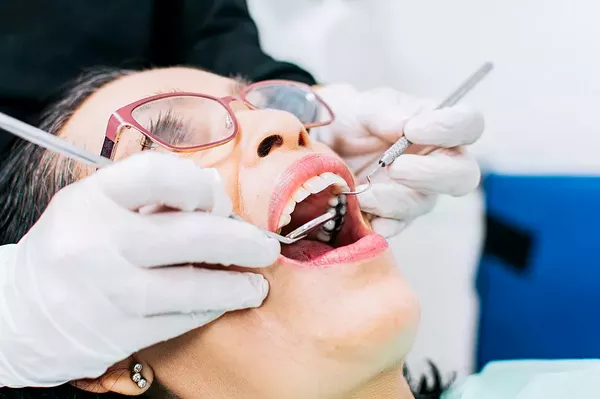The pursuit of a brighter, whiter smile has led individuals to explore various natural remedies, and one such popular notion is the belief that strawberries can whiten teeth. This concept has gained traction due to the presence of malic acid in strawberries, which is believed to have natural whitening properties. In this in-depth exploration, we will delve into the science behind strawberries as a teeth-whitening remedy, separate fact from fiction, and provide insights into maintaining oral health while seeking a radiant smile.
The Promise of Malic Acid in Strawberries
The key ingredient in strawberries often associated with teeth whitening is malic acid. Malic acid is a naturally occurring compound found in several fruits, including strawberries, apples, and grapes. Proponents of using strawberries for teeth whitening argue that malic acid can break down surface stains on teeth, leading to a brighter smile.
Understanding the Mechanism: How Malic Acid Works
Malic acid is known for its astringent properties, which means it has the ability to break down and remove surface stains on the enamel of the teeth. The theory is that by mashing strawberries and applying them to the teeth, the malic acid can effectively remove stains and contribute to a whiter appearance.The process is often described as follows:
Mashing the Strawberries:
Advocates of this method suggest mashing ripe strawberries into a pulp or creating a strawberry paste.
Application to Teeth:
The mashed strawberries or paste is then applied to the teeth, either using a toothbrush or fingers.
Allowing Contact Time:
Users are typically advised to allow the strawberry mixture to remain in contact with the teeth for a short period, often around 5 minutes.
Rinsing Thoroughly:
After the recommended contact time, individuals are instructed to thoroughly rinse their mouths to remove any residue.
The Reality Check: Does It Really Work?
While the idea of using strawberries for teeth whitening may sound appealing, it’s crucial to examine the scientific evidence and separate expectations from reality.
Limited Contact Time:
The recommended contact time for strawberry application is relatively short. Unlike commercial teeth-whitening products that may have extended contact times, the brief exposure to malic acid in strawberries may limit its effectiveness in breaking down deep stains.
Surface Stain Removal:
Malic acid’s potential for breaking down surface stains is acknowledged. However, its ability to penetrate and address intrinsic stains (stains within the tooth) is limited. Commercial whitening products often contain peroxide-based agents that can address both surface and intrinsic stains.
Potential for Abrasion:
The texture of strawberries, particularly the seeds, may have a mildly abrasive effect on the enamel. While this abrasion might contribute to the removal of some surface stains, it could also pose a risk of enamel wear if used excessively.
Variable Results:
The effectiveness of using strawberries for teeth whitening can vary widely among individuals. Factors such as the nature and cause of stains, individual oral hygiene practices, and overall oral health can influence the results.
Lack of Scientific Consensus:
While there is anecdotal evidence supporting the idea of strawberries as a teeth-whitening remedy, scientific consensus on its effectiveness is lacking. More research is needed to establish the reliability and safety of this method.
Addressing Concerns and Considerations
Potential for Tooth Sensitivity:
Malic acid, while natural, can be acidic. Prolonged or frequent exposure to acidic substances can contribute to tooth sensitivity. Individuals with sensitive teeth or existing enamel erosion should exercise caution.
Dental Health Implications:
Relying solely on natural remedies like strawberries for teeth whitening may divert attention from comprehensive oral care. Regular brushing, flossing, and professional dental cleanings remain essential for maintaining oral health.
Managing Expectations:
It’s crucial to manage expectations regarding the extent of whitening achievable through natural remedies. For individuals with significant staining or discoloration, professional teeth-whitening options may offer more predictable and potent results.
Balancing Natural and Professional Approaches:
Integrating natural remedies into an overall oral care routine can be a positive step. However, combining these approaches with professional guidance and treatments ensures a balanced and effective strategy.
The Role of Professional Teeth Whitening
While natural remedies like strawberries may have a place in oral care, it’s important to recognize the limitations and consider professional teeth-whitening options for more comprehensive results. Professional whitening treatments, typically performed under the supervision of a dentist, often involve the use of peroxide-based agents in controlled concentrations.
Professional Teeth Whitening: What to Expect
Consultation:
A consultation with a dentist is the first step. During this appointment, the dentist will assess oral health, discuss whitening goals, and determine the suitability of professional whitening.
Customized Treatment Plan:
Based on the assessment, the dentist will create a customized treatment plan. Professional whitening treatments may include in-office procedures, take-home kits, or a combination of both.
Controlled Peroxide Concentrations:
Professional whitening treatments use peroxide-based gels with controlled concentrations. This allows for effective stain removal while minimizing the risk of sensitivity.
Supervised Application:
In-office treatments are performed under the supervision of a dental professional, ensuring precise application and monitoring of the whitening process.
Tailored to Individual Needs:
Professional whitening takes into account individual factors such as tooth sensitivity, existing dental restorations, and overall oral health. This personalized approach contributes to safer and more effective outcomes.
Immediate and Predictable Results:
Professional teeth whitening often provides immediate and predictable results. The controlled use of peroxide allows for the addressing of both surface and intrinsic stains, leading to a more comprehensive whitening effect.
Maintaining Oral Health for a Radiant Smile
While exploring natural remedies like strawberries for teeth whitening, it’s essential to prioritize overall oral health. Consider the following tips for maintaining a radiant smile:
Regular Oral Care:
Adhere to a consistent oral care routine, including brushing your teeth at least twice a day and flossing daily. This helps prevent the buildup of plaque and surface stains.
Professional Cleanings:
Schedule regular dental check-ups and cleanings. Professional cleanings remove tartar and surface stains, contributing to a brighter smile.
Balanced Diet:
Maintain a balanced diet with limited consumption of staining substances such as coffee, tea, and red wine. If you indulge in these beverages, consider rinsing your mouth or brushing your teeth afterward.
Hydration and Saliva Production:
Stay hydrated, as a well-hydrated mouth supports saliva production. Saliva helps neutralize acids and maintain a healthy oral environment.
Moderation in Natural Remedies:
If incorporating natural remedies like strawberries, do so in moderation. Excessive use or reliance on natural remedies may not provide the desired results and could pose risks.
Conclusion: Balancing Natural Remedies and Professional Care
In the realm of teeth whitening, the allure of natural remedies like strawberries captures the imagination, promising a blend of nature’s goodness and oral care. While there may be merit in the natural properties of malic acid, it’s important to approach such remedies with a balanced perspective.
Strawberries, when used judiciously, may contribute to a fresher and potentially brighter smile. However, for those seeking more significant and predictable whitening results, the realm of professional teeth whitening offers a well-established and supervised approach.
Ultimately, the journey to a radiant smile involves a combination of oral care practices, mindful dietary choices, and, when desired, professional guidance. By striking a balance between natural remedies and professional care, individuals can embark on a path that not only enhances the aesthetics of their smile but also promotes lasting oral health and well-being.





























